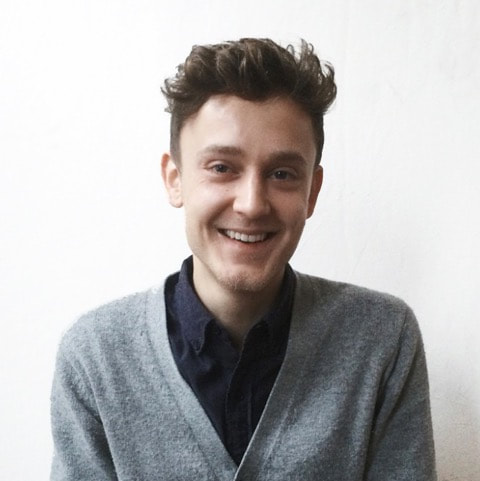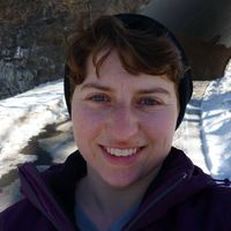Mapping Urban Renewal, Then and Now: An interview with Jakob Winkler
Today on Gotham, editor Katie Uva interviews Jakob Winkler about his Atlas of Urban Renewal, which blends historical research and critical cartography to challenge assumptions about urban renewal and empower communities resisting its impacts today.
How did you come up with the idea of an Atlas of Urban Renewal?
The idea developed during my last year at Parsons’ Design and Urban Ecologies program, a graduate program that tries to reframe the way we analyze and design cities. I became interested in the subject while interning at 596 Acres, a community advocacy organization that helps New Yorkers get access to public land in the city. They were doing a project called the Urban Reviewer, specifically designed to give residents the information they need to access land cleared for a “public purpose.”
At first I had no idea what form the project would take, but I knew from the very beginning that I didn’t want to do just straight forward research. I wanted to produce actionable knowledge in a format that was useful for local communities to help produce change. The atlas idea came later on. I first used spatial analysis only as a tool — mapping out where and when urban renewal plans were implemented, which neighborhoods and demographics they were targeting, and where policies overlapped. The idea of an atlas came only when I started getting into critical cartography. During my research I realized that maps were crucial tools in the practice of urban renewal. Maps helped produce the “problems” that urban renewal set out to solve and legitimized this policy. A good example are the racist redlining maps from the 1930s. Those maps changed how people thought of redlined areas and actively diverted money away from minority neighborhoods. Instead of just representing space, these maps really produced a certain kind of space, namely disinvested neighborhoods. And this condition of man-made decline (which in the language of urban renewal was called “blighted” or “slum”) was later used to take land from the residents, bulldoze what was there and hand it over to private developers for redevelopment. I became very interested in the notion of appropriating the power of maps and using this format to dissect and show how urban renewal produced uneven geographies. Critical cartography thus became a methodological framework that I used to produce the atlas.
Visualizing the Impacts of Urban Renewal: Cycles of Mass Displacement
Time Mapping Urban Renewal: Past and Present
What was the actual process like? How did you begin your atlas, and what evolved as you worked on it?
I followed a year-long design research process and the atlas went through many different iterations. Before I put any thought in the form that this project would take, I started interrogating the subject matter and doing tons of research. Most important were the conversations I had with people who were directly involved with urban renewal. This ranged from scholars doing research on it, people living in neighborhoods that were or are getting “renewed,” activists fighting urban renewal, and city employees who are working on the official process. I realized that there is a huge gap between traditional and official accounts of urban renewal and lived realities in at least two respects.
First, most sources treat urban renewal as this 'long gone' policy, kind of a dark phase of history that has little to do with today. But urban renewal is very much still an active force shaping our city unevenly. Not only are the impacts of past urban renewal plans still being felt today — (there are, for example, 250 acres of land that were cleared under this policy and are still undeveloped today) — but the City is also still using this policy and adopting new plans. Most people conflate urban renewal with the federal program that ended in 1974. But 40% all urban renewal plans have actually been adopted since 1974. And in some cases, the way urban renewal is practiced is shockingly similar to the modernist bulldozer approach. In 2008, for example, the City adopted the Willets Point Urban Renewal Plan in northern Queens. The area was mainly used by immigrant-run auto repair businesses. The City totally neglected the area for decades, not installing a sewer system or maintaining the streets. When the City understood the potential value of this land under different zoning, it defined the land as “underutilized,” displaced the people who were using it, and handed these plots to private developers to build an upscale residential and commercial district.
Second, communities impacted by this policy are often portrayed as passive victims in both official and academic accounts of urban renewal. But the history of this policy in New York City is full of examples where citizen groups have successfully resisted their displacement, and appropriated the urban renewal framework for community-led planning.
To tell these stories that I had learned, I decided to dice up the atlas into several chapters. I dedicated the first chapter to the impacts of urban renewal, showing what has been done and how urban renewal continues to shape our city. The second chapter dissects how the policy works. And the third chapter puts the examples of resistance on the map. I wanted to showcase these stories in the atlas, and inspire other groups to intervene in the policy and use it for their communities’ benefits.
And what primary and secondary sources were useful in shaping this project? What resources are key for someone trying to better understand urban renewal's history and its impact?
My research started with secondary sources: monographs, edited volumes and journal articles. Even though this was absolutely necessary to get started and get a basic understanding of urban renewal, I eventually had to distance myself from the dominant narrative to get to new insights. I wanted to incorporate the lived experience, so talking to people that had been directly involved with urban renewal was key. I also did archival research at NYU’s Tamiment Library & Robert F. Wagner Labor Archive, focusing on labor history and radical political movements, and the Interference Archive, a volunteer-run archive by and for social movements. I read through meeting minutes of groups organizing against urban renewal, old newspaper articles, official correspondences, displacement reports, protest ephemera, etc. Finally, I used geographic data, combining data sets from current and past census data, open data, and various other sources. One large data set that was crucial to the project was the Urban Reviewer. 596 Acres did a survey of all urban renewal plans ever adopted by the City, and made digitized versions accessible to the public. Coming up with this data set took over two years and included mining printed plans at the Department of Housing Preservation and Development (read the full story here). I could have never done that myself, obviously. Another very helpful data set was University of Richmond’s Mapping Inequality project, which digitized redlining maps. Geocoding and tracing the old paper maps is a tedious process that takes forever, so that was a great help.
And can you clarify for us, how would you define "critical mapping"? Why is that an important method?
There is a lot of writing and work done on "critical cartography," with varying definitions. For my work, I defined critical mapping in terms of what is being shown on the maps, the form of the maps and the process of producing the maps.
The history of cartography is closely tied to the emergence of the modern nation state: the military, capitalism, and practices of internal and external colonization and exploitation. Maps have been tools of dominance because they usually represented very specific, privileged forms of knowing. Critical cartography positions itself in opposition to such dominating practices. One of the ways of doing so is by putting perspectives on the map that are otherwise underrepresented. My maps try to demystify how urban renewal has created uneven geographies, and also reveal how grassroots groups have resisted and intervened.
Part of why maps have historically been so powerful is because they imposed a grid logic onto the world that made it possible to systemize and control geography. Critical mapping to me means going beyond the naturalized logic of geography as a pre-existing, measurable unit. In the atlas I tried to represent geography how it is experienced and felt, not how one would define it following the logic of a geography school book.
And lastly, opposing dominant forms of mapping for me means to open up the mapmaking process. I tried to be aware of my own positionality as a white man who has no lived experience of urban renewal. Being aware of the violent history of mapmaking, I didn’t want to present my maps as authoritative and definitive pieces of knowledge but rather as conversation starters. I also tried to incorporate the stories of people who have experienced urban renewal as much as I could. Finally, I opened up the mapmaking process by presenting my maps at an exhibition on migration and displacement and inviting viewers to become co-producers of the maps. The maps were printed on large posters and I provided tags and pins for the public to annotate them. I am planning to do more of these atlas presentations, where my original maps are only a starting point that opens up a collective process of knowledge sharing and archiving.
So how would you like this atlas to be used?
Well, I hoped it would be, as I say, a tool of actionable knowledge. Urban renewal is such an opaque policy; affected communities often have a difficult time participating in its design. Yet there are many examples in New York where citizen groups have organized resistance and appropriated this framework for the communities’ benefit. The most prominent one is probably the Cooper Square Committee, a group that fought their own displacement under an official plan and forced the City to adopt their own community vision as the official urban renewal plan. Often these groups are so busy organizing their communities and fighting the City that there is no time to share their experiences with others. The atlas tries to do exactly that: making these embedded experiences, strategies and knowledges accessible to other communities that are directly impacted by urban renewal. Maps are great ways of sharing knowledge. They are more intuitive and accessible than written words. More generally, I hope that the atlas helps to reengage a political conversation about urban renewal, and how it is not ancient history but an ongoing process that can be altered.
And what projects are you working on now? What do you feel are the leading issues facing the city?
I'm working on a research project that looks at digital exclusion in Detroit and how residents and grassroots groups have self-organized to get access to the internet. I'm also wrapping up a project that deals with protest in relation to the built environment in New York City. We’ve been looking at forms of collective action in which New Yorkers are protesting the physical design of our city. Most of the protests were in relation to gentrification and displacement. I think that those are huge issues. The affordable housing crisis, the ongoing displacement of low-income and minority groups, and generally the way in which the City is being privatized and dealt with as a business, as opposed to a public good that we all have a right to access and shape.
Sounds fascinating. Thanks so much, Jakob!
Thank you!
Learn more about Jakob Winkler’s work here.



